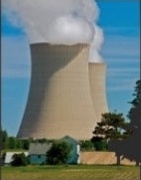By HIROSHI ISHIZUKA
Of all the astonishing sights that unfolded in the aftermath of the 2011 nuclear crisis, the one that took the biscuit was ostriches roaming in one of the towns hosting the stricken Fukushima No. 1 nuclear plant.
[…]
It was not uncommon for later visitors, wearing protective gear because of high radiation levels, to see cattle and pigs wandering through the streets of Futaba and Okuma, the now-empty towns that co-hosted the nuclear power plant.
Masato Kino, now 50 and an economy ministry official in charge of decommissioning and radioactive water issues, returned to the area on Sept. 23, 2011, six months after the magnitude-9.0 earthquake that hit the northeastern Tohoku region, triggered devastating tsunami which in turn knocked out cooling systems at the plant and caused the nuclear crisis.
[…]
Tomizawa trapped six ostriches in late 2011 with help from the farm ministry and other parties.
Farm ministry officials told him to kill them, so Tomizawa contacted ornithologists and other experts to find ways to “make full use of them.”
One of them, Yoshihiro Hayashi, director-general of the National Museum of Nature and Science, who was involved in research on animals affected by the disaster, asked ornithologist Hiroshi Ogawa, an animal husbandry professor at the Tokyo University of Agriculture, for advice.In response to the offer, Ogawa began examining how the six ostriches trapped in January and May 2012 had absorbed radioactive substances.
It was assumed the feral birds feasted on contaminated plants, bugs and rainwater, so Ogawa tried to see if there was a way of reducing radioactive substances in their bodies by feeding them radiation-free dog food and well water.
[…]
The birds displayed a radiation reading of 4.6 microsieverts per hour when the research started in March 2012. To lower the figure, Tomizawa frequented the stable from Saitama Prefecture once every one or two weeks to give them clean food and water.
The six ostriches were finally euthanized and dissected one month, two and a half months, nine and a half months and 14 months after they were caught, respectively, so that changes in radiation levels in their bodies could be analyzed.
SIGNIFICANT FINDINGS
The results showed that almost no radioactive substances other than radioactive cesium derived from the Fukushima crisis remained in their bodies, meaning that they were free from strontium and other more dangerous materials.According to the findings, cesium is more easily absorbed through skeletal muscles than organs. It turned out to be difficult to rid muscle tissue of the substance.
The cesium reading began dropping nine and a half months after the birds were captured, which suggests the radiation level will drop if the animals are kept under low-radiation conditions.
Read more at The ostriches of Fukushima and what they told us about radiation




